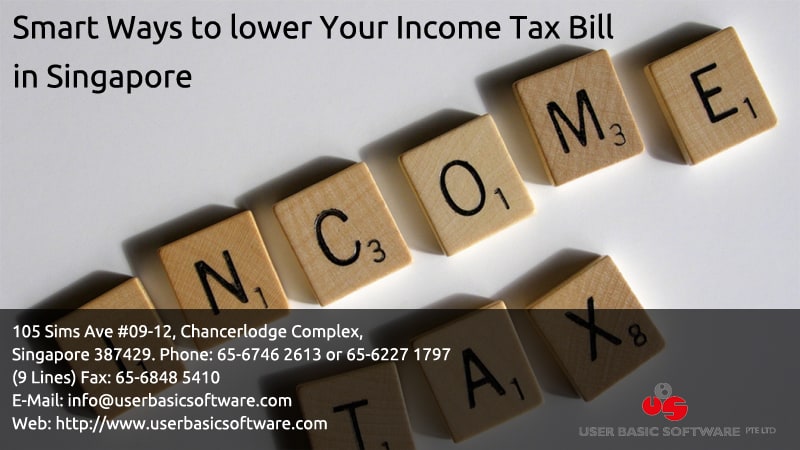Here are some smart and simple ways for Singapore residents, how they can legally reduce his/her income tax bill in Singapore.
Earned income relief
Income tax relief of between $1,000 and $8,000 is available if you have taxable income from employment, a pension, or a trade, business or profession. The relief increases from $1,000 for those who are below 55 to $6,000 for those 55-59 and $8000 for those over 60. The exemption amount increases to a minimum of $4,000 and a maximum of $12,000 in the case of physical or mental disability.
CPF Cash Top-up (parents, grandparents, spouse and/or siblings) Relief
In addition to topping up your own CPF special/retirement account, you could consider topping up the CPF retirement accounts of your parents and/or grandparents. The cash could go towards helping them with their retirement needs while earning you some tax relief on your own income.
If you have a spouse or siblings who do not have income exceeding $4,000, topping up their CPF special/retirement account will grant you the same relief. Similar to top up your own CPF account, the maximum relief provided here is $7,000. If you have topped up both your own and your family member’s CPF special/retirement account, the maximum about of relief you will be entitled is $14,000.
Parenthood tax rebate/Qualifying child relief/Working mother’s child relief
It is common knowledge that the Singapore government is strongly encouraging Singaporeans to have children. For new parents who are eligible for the above rebate and reliefs, please do remember to enter the particulars of your newborn when filing for your income tax next year. This will enable the IRAS to provide you with the necessary rebates and relief for this year.
Life Insurance Relief
Those individuals who have made a total compulsory employee CPF contribution or self-employed Medisave/Voluntary CPF contribution, or both, of less than $5,000 in total in any one year are eligible for Life Insurance relief. The difference between $5,000 and the CPF contribution can be claimed as exempt. Additionally, 7% of your own or your spouse’s insured value (if you are the policyholder) or the insurance premium paid, whichever is lower, can be claimed as a relief.
Course Fee Relief
Course Fee Relief is offered to encourage people to improve their skills and get better job opportunities. The scheme is designed mainly for those individuals who are currently, or were previously, employed on a full-time basis. Despite the number of courses attended, a maximum claim amount of $5,500 is possible under this scheme. If the assessable income is less than or equal to $22,000, then a deferred claim is acceptable within two years from the date of taking the course.
Foreign Maid Levy Relief
This is another scheme established to support women to stay in the workforce. According to this scheme, a woman with school-attending children can claim relief for any salary paid in the prior year to a foreign domestic worker. As much as twice the salary paid in the previous year to the maid can be claimed as a relief.
Supplementary Retirement Scheme (SRS) Relief
Supplementary Retirement Scheme started by the Singapore government in 2001 to address the financial needs of an aging population. The program, operated by the private sector, complements the CPF (Central Provident Fund) with attractive tax benefits. Contributions to SRS are eligible for tax relief, subject to a maximum amount of $12,750 for Singapore permanent residents and $29,750 for resident foreigners. The SRS operator provides the information automatically and so there is no need to claim relief separately on one’s tax return.
NSman (Self/Wife/Parent) Relief
NSman Relief recognizes the contributions of individuals to the National Service (NS) in the previous work year (1st April to 31st March). Any operationally ready NSman is qualified for this tax relief. The amount of the claim can range from $1,500 to $5,000, depending on whether an individual has performed NS activities in the preceding year.
Donations
A donation made to a standard institution would allow the contributor to claim tax relief of 250% of the amount donated. If you’re earning $40,000 a year and you give 10% of your income ($4,000), your tax bill will be reduced by just $200. This is about 10 times lesser than what the great rich person would have received for giving the same amount, reasonably because the percentage of tax they have to pay is much higher as well. All donations must be made before the year end for you to claim your tax relief.














